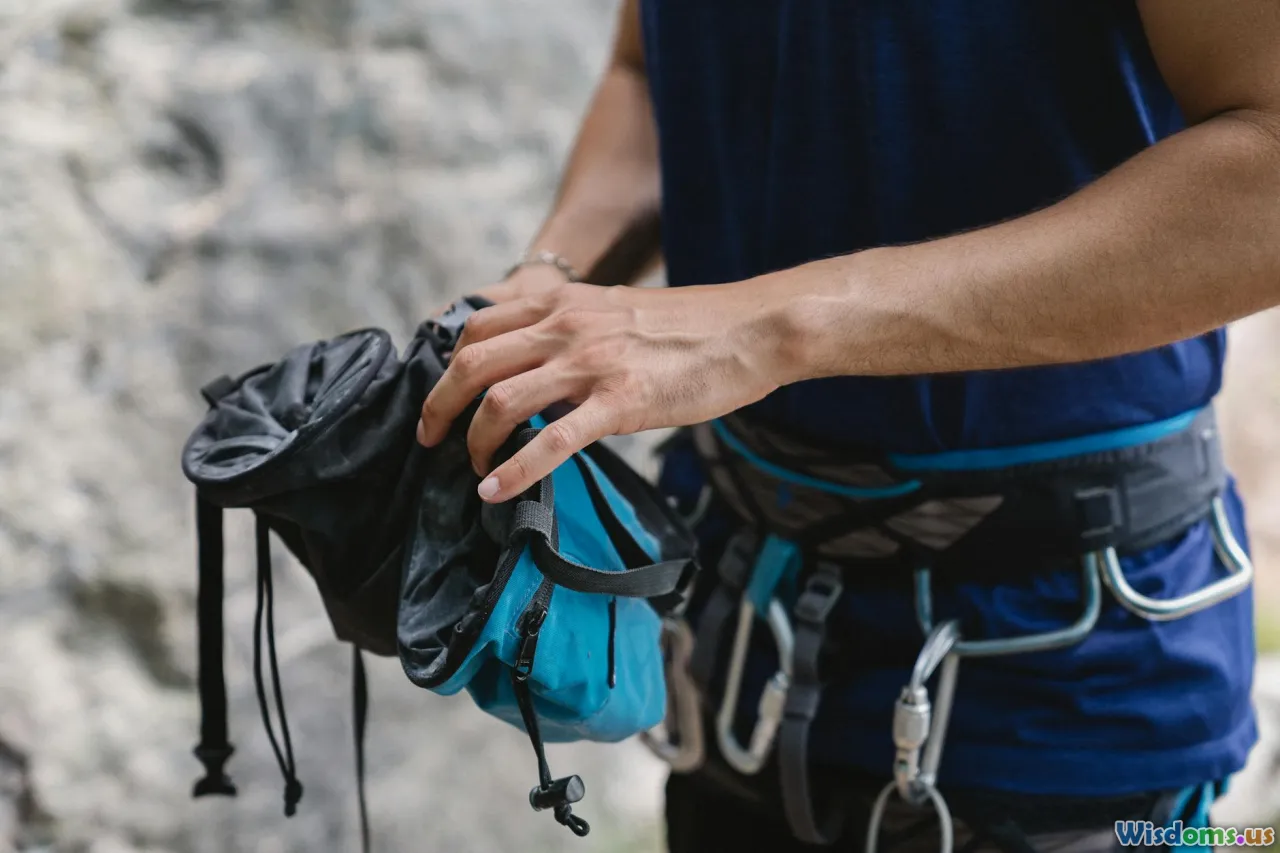
How Endurance Training Transforms Your Body for Mountain Expeditions
10 min read Explore how endurance training reshapes your body to conquer the challenges of mountain expeditions effectively. (0 Reviews)
How Endurance Training Transforms Your Body for Mountain Expeditions
Introduction
The thrill of scaling soaring peaks and trekking across challenging terrains is irresistible to adventure enthusiasts worldwide. However, mountaineering pushes the limits of human endurance and demands a body finely tuned to withstand extreme environmental stresses. Endurance training isn't just about running longer distances or spending hours hiking; it's a strategic transformation that primes your body to thrive in the high-altitude wilderness.
Why is endurance training so central to mountain expeditions? Because these journeys demand sustained energy output, efficient oxygen utilization, muscular resilience, and mental toughness—qualities that evolve through dedicated and targeted preparation. This article unlocks the multifaceted ways endurance training transforms your physiology and mindset to prepare you for the arduous yet rewarding experience of mountain expeditions.
Physiological Adaptations to Endurance Training
Enhanced Cardiovascular Efficiency
When you engage in consistent endurance training—such as long-distance running, cycling, swimming, or hiking—your heart undergoes hypertrophy, particularly of the left ventricle. This means the heart muscle becomes thicker and stronger, enabling increased stroke volume. Simply put, your heart pumps more blood with each beat.
An increased stroke volume means your body circulates oxygen-rich blood more efficiently to working muscles, reducing fatigue during prolonged activity. According to a 2015 study published in the Journal of Applied Physiology, endurance training can improve VO2 max (the maximal oxygen uptake) by as much as 20% in untrained individuals over 8-12 weeks. VO2 max is the gold standard for aerobic fitness—crucial for sustaining efforts at altitude, where oxygen availability is limited.
Adaptations to Hypoxia: Preparing for The Thin Air
High-altitude environments feature significantly reduced atmospheric oxygen pressure. Endurance training, especially when combined with altitude exposure (either simulated or actual), prompts your body to adapt through hematological changes.
Endurance athletes see an increase in erythropoietin (EPO) production, a hormone that stimulates red blood cell creation. More red blood cells improve the blood’s oxygen-carrying capacity, which is vital for mountain expeditions. For example, climbers preparing for Everest often undergo "live high-train low" protocols to maximize these adaptations.
Improved Metabolic Efficiency and Fat Utilization
Endurance training enhances your muscle cells’ ability to oxidize fatty acids, sparing glycogen stores during prolonged exercise. Glycogen depletion leads to fatigue, so efficiently burning fat extends stamina.
Emerging research indicates mitochondrial density within muscle fibers increases with endurance training, elevating aerobic energy production. This metabolic shift is pivotal when climbing steep and extended mountain trails where energy conservation can make the difference between success and exhaustion.
Muscular Transformations: Strength Meets Stamina
Endurance fitness is often mistakenly equated with muscle loss or weakness. In reality, smart endurance training creates lean, resilient muscle optimized for long-term function rather than brief maximal efforts.
Increased Capillary Density and Muscle Oxygenation
Training enhances capillarization around muscle fibers, allowing improved oxygen delivery and nutrient exchange. For climbers carrying heavy backpacks through rugged terrains, this means muscles recover faster and sustain activity longer without cramping or injury.
Shift in Muscle Fiber Composition
Your skeletal muscles house different fiber types—slow-twitch (Type I) fibers specialized for endurance and fast-twitch (Type II) fibers for power. Endurance training promotes a transition of some fast-twitch fibers towards a more oxidative, fatigue-resistant phenotype.
This muscular remodeling equips your legs for the repetitive, sustained contractions necessary in long ascents and descents without excessive soreness or breakdown.
Injury Prevention Through Conditioning
Endurance training also incorporates strength and flexibility exercises that strengthen tendons, ligaments, and connective tissue. By reinforcing these structures, it lowers the risk of common expedition injuries such as tendonitis, strains, and stress fractures.
Psychological Fortification Enabled by Endurance Training
Conquering formidable mountain routes is as much a mental endeavor as a physical one. Endurance training cultivates psychological resilience in several ways.
Developing Mental Toughness and Focus
Long-duration training sessions challenge your mind to stay present despite discomfort and fatigue. This fosters grit, discipline, and sustained concentration—essential traits for navigating hazardous trails and unpredictable weather.
Stress Response Regulation
Consistent endurance work acts as a stress inoculator. Research from the International Journal of Environmental Research and Public Health shows that endurance athletes display better stress hormone regulation and quicker recovery from psychological stress.
In practical terms, this means improved decision-making and emotional control at high altitudes where oxygen deprivation and environmental challenges stress cognition.
Enhanced Sleep Quality
Quality restorative sleep is crucial for recovery during multi-day expeditions. Endurance training naturally improves sleep patterns, which aids muscle repair, immune function, and mental alertness.
Real-World Examples: Endurance Training in Action
The Success Story of Kilimanjaro Trekkers
Experienced guides on Mount Kilimanjaro often stress that clients with well-structured endurance training plans, including uphill hiking and interval cardio, manage altitude sickness symptoms more effectively and complete treks without supplemental oxygen.
A 2017 report from the African Journal of Wilderness Medicine demonstrated trekkers who prepared with 8 weeks of progressive endurance exercise reduced Acute Mountain Sickness incidence by 30%.
Everest Expeditions: The Role of Conditioning
High-altitude climbers like Lydia Bradey, the first woman to summit Everest without supplemental oxygen, devote months to endurance and altitude-acclimatization training. Her preparation focused on long-distance running, stair routines with weighted packs, and extended hiking—all contributing to the cardiovascular and muscular adaptations necessary for high-altitude survival.
Practical Guidelines: Crafting Your Endurance Training Plan
Start with a Baseline Fitness Assessment
Understanding your current fitness level can help tailor your training efficiently. Consult professionals or use VO2 max tests, resting heart rate measurements, and endurance benchmarks.
Integrate Diverse Endurance Modalities
Include activities like:
- Long-distance trail running
- Stair climbing with incremental loads
- Cycling to improve leg stamina
- Swimming for cardiovascular conditioning without joint stress
Incorporate Interval Training
High-Intensity Interval Training (HIIT) boosts aerobic and anaerobic capacity, crucial for steep lead climbs or technical sections demanding bursts of power.
Altitude Acclimatization Techniques
Where possible, train or camp at elevations closer to your expedition altitude. Simulated altitude tents and masks may offer limited benefits but real exposure remains most effective.
Consistency and Progressive Overload
Endurance adaptations require steady, progressive increases in training duration and intensity. Avoid abrupt spikes to reduce injury risk.
Support Training with Strength and Flexibility Work
Incorporate exercises to strengthen the core, hips, and stabilizing muscles. Practicing yoga or Pilates can also improve balance and flexibility.
Nutrition and Hydration Strategies
Endurance training enhances nutrient demands. Consume a balanced diet focused on complex carbohydrates, quality proteins, and healthy fats, paired with adequate hydration, especially for altitude preps.
Conclusion
Endurance training is far more than a preparatory ritual for mountain expeditions; it is a comprehensive transformation of your body and mind that equips you for the formidable challenges of alpine environments. Physiologically, it boosts cardiovascular output, metabolic efficiency, and muscle resilience. Psychologically, it builds mental endurance and stress tolerance, empowering climbers to face daunting terrains and high altitudes with confidence.
The science and real-world experience underscore the undeniable value of a disciplined endurance regimen, making the difference between struggling and thriving on mountain adventures. So whether you dream of summiting Everest, trekking Kilimanjaro, or exploring lesser-known peaks, embrace endurance training not as a chore but as a powerful ally on your path to summit success.
"Mountains inspire endurance, and endurance transforms us beyond the trail." – Unknown
Rate the Post
User Reviews
Popular Posts




















